by Brooks Riley
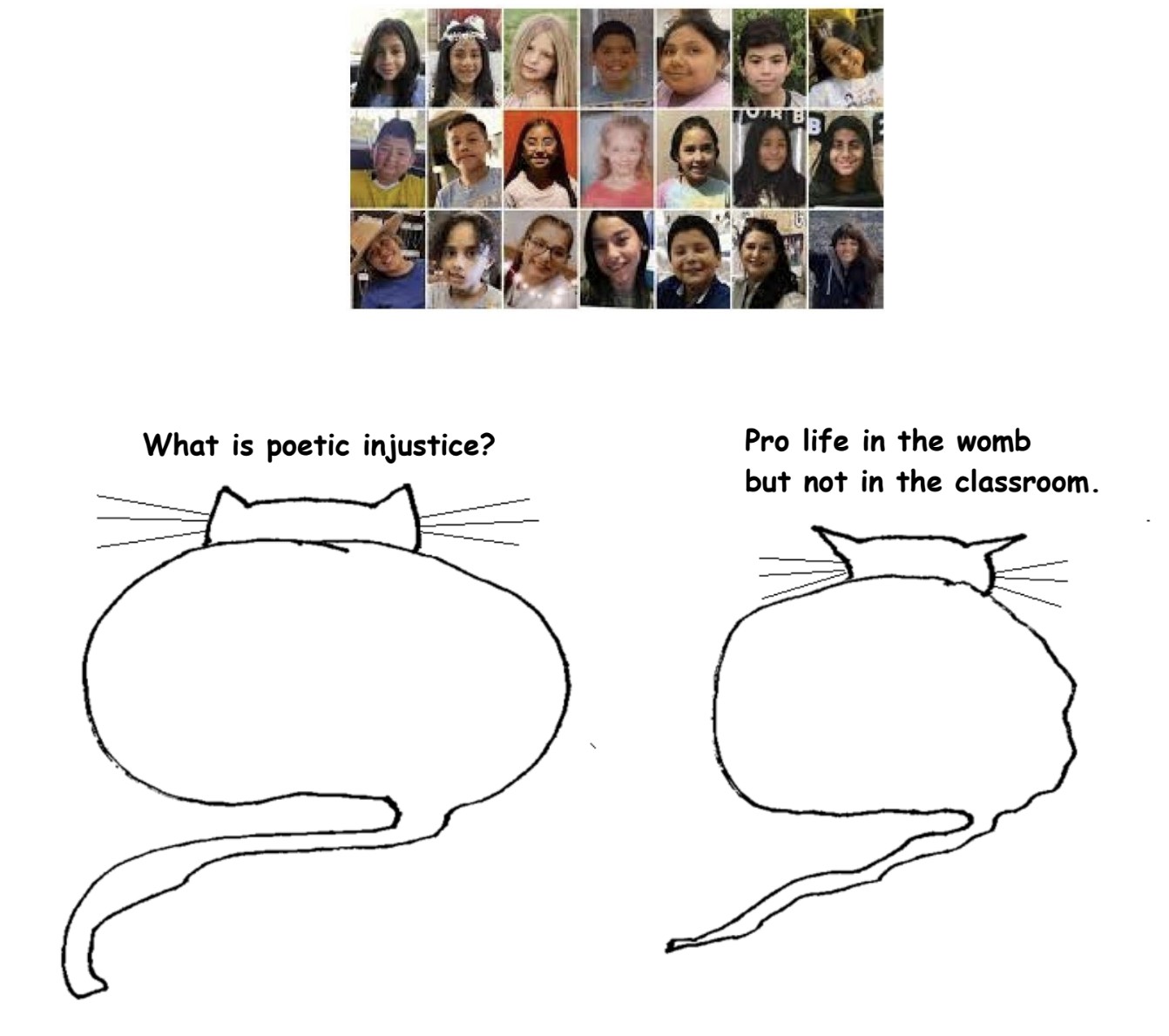
Though we are an aggregator blog (providing links to content elsewhere) on all other days, on Mondays we have only original writing by our editors and guest columnists. Each of us writes on any subject we wish, and the length of articles generally varies between 1000 and 2500 words. Our writers are free to express their own opinions and we do not censor them in any way. Sometimes we agree with them and sometimes we don’t.Below you will find links to all our past Monday columns, in alphabetical order by last name of the author. Within each columnist’s listing, the entries are mostly in reverse-chronological order (most recent first).
by Brooks Riley

by Derek Neal
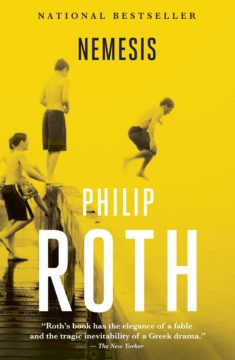 I recently read Philip Roth’s Nemesis, a novel that’s received renewed attention as it centers on a polio epidemic. This isn’t why I read it, although I’ll admit that reading about the slow build and then cascading avalanche of a virus, and the public’s nonchalance giving way to caution and then increased panic and hysteria, closely paralleled the events of early 2020. I suppose epidemics and our response to them always play out in a similar fashion. I picked the book off my shelf because I needed something to read—much like the setting of the novel, it’s summer vacation for me. My dad had given me the book some time before, and it had sat there, collecting dust on the shelf built into the low walls of my slope-ceilinged attic apartment. As a rule, I hate receiving books as gifts because I then feel an obligation to read them; instead, I prefer to choose and read a book in a more serendipitous fashion. It’s not something that can be forced. But if the giver of the book knows that their gift will go unread, possibly for years, but will then present itself to be read at the right moment, a book can be a great gift.
I recently read Philip Roth’s Nemesis, a novel that’s received renewed attention as it centers on a polio epidemic. This isn’t why I read it, although I’ll admit that reading about the slow build and then cascading avalanche of a virus, and the public’s nonchalance giving way to caution and then increased panic and hysteria, closely paralleled the events of early 2020. I suppose epidemics and our response to them always play out in a similar fashion. I picked the book off my shelf because I needed something to read—much like the setting of the novel, it’s summer vacation for me. My dad had given me the book some time before, and it had sat there, collecting dust on the shelf built into the low walls of my slope-ceilinged attic apartment. As a rule, I hate receiving books as gifts because I then feel an obligation to read them; instead, I prefer to choose and read a book in a more serendipitous fashion. It’s not something that can be forced. But if the giver of the book knows that their gift will go unread, possibly for years, but will then present itself to be read at the right moment, a book can be a great gift.
I took Nemesis to my family’s cottage, which sits at the end of an unpaved road and is situated steps from a small lake. A storm blew through and we promptly lost power. Not having TV, Wi-Fi, or many of the other distractions of modern life, I read Nemesis in a day or two and rediscovered the feeling of simultaneously racing through a book and trying to drag it out; when a novel is good—and Nemesis is a masterpiece in my estimation—the reading experience becomes so engrossing that it has to be artificially prolonged without losing the momentum of the story. Inevitably, this fails, you finish the book, and thankfully there are many more waiting for you. Read more »
by Dick Edelstein
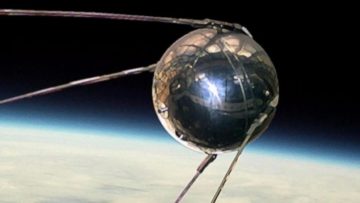 By the time I got to high school, the humanities were seen as a kind of side dish in the educational meal. This was largely due to the exigencies of the space race and an inclination on the part of American society to acquiesce to the suppression of critical thought in the post-war years. The main course from a geopolitical perspective was science and engineering.
By the time I got to high school, the humanities were seen as a kind of side dish in the educational meal. This was largely due to the exigencies of the space race and an inclination on the part of American society to acquiesce to the suppression of critical thought in the post-war years. The main course from a geopolitical perspective was science and engineering.
Students here in Spain learn philosophy as a subject in secondary school. But, when I was growing up in Seattle, it was not in the curriculum in any guise at all. Probably the school administration felt that the safest thing to do was to leave it out. But my world history teacher in the 11th grade had a different idea. He wanted to give students some awareness of all of the cultural currents that impacted history. His talk on philosophy was so pithy I can still remember it – even though it took only about twenty minutes.
Here it is in essence. Idealism means that chair you are looking at now is just a reflection of an ideal chair that exists somewhere. Realism means that chair is really a chair. Dialectical materialism involves a thesis, antithesis and synthesis and goes something like the following. Thesis – the sky is blue. Antithesis – trees are green. Synthesis – Red China should join the United Nations.
While dubious in content, this lesson was significant because I managed to remember it all these years. At least the teacher addressed the topic of philosophy in some way. Read more »
by Tamuira Reid
 Guns guns guns
Guns guns guns
on the news
nothing new
here comes the Blue.
Guns guns guns
where we sleep
where we eat
beneath our feet.
Guns guns guns
where we pray
where we play
get outta the way.
—Oliver, Brooklyn, New York (11 years-old)
1. There are more guns than people in the United States.
2. You can legally buy an assault weapon before you can buy a beer.
3. Salvador Ramos bought himself a pair of AR-15’s – and over 375 rounds of ammunition – in celebration of his eighteenth birthday. They felt light in his hands, almost weightless.
4. An 8 year-old Uvalde survivor initially mistook the gunfire in his school for fireworks. He had never heard an AR-17 spray bullets before. “Like this pop, pop, pop sound.”
5. During the Uvalde shooting, a father tried to enter the building to save his daughter, a student at Robb Elementary. “My baby is in there,” he pleaded. But police officers kept him on the outside looking in.
6. (The longest hour of his life would turn out to be the end of hers.)
7. After killing their teacher and barricading the door, Ramos told students, “You are going to die”. He then cherry-picked his victims, one by one.
8. Guns are now the number one cause of death for children in the United States.
9. A fourth grade survivor said she smeared her best friend’s blood all over her body to “play dead”. Her hair is beginning to fall out from where bullet fragments grazed her scalp.
10. Fox News anchors said Ramos “might’ve been trans”, that he “wore eyeliner and came from a broken home”. That he shot-up his grandmother before he shot-up the school.
11. During 2020, the first year of the Covid-19 pandemic, more than 45,000 Americans died from gunshot wounds.
12. Uvalde was the 27th school shooting of 2022.
13. The FBI has unofficially defined a mass shooter as an individual actively engaged in killing or attempting to kill people in a populated area.
14. 11 year-old Oliver, Brooklyn, New York, has been practicing active shooter drills since kindergarten, before he knew how to read. “The teachers call it something else, because they don’t want to scare us. But we know what it is. We know what we’re doing.” He saw bulletproof backpacks were trending recently, and calls product both smart and sad.
15. The National Rifle Association has touted the AR-15 as America’s rifle. Its popularity has skyrocketed in the past two decades.
16. Columbine High School, Virginia Tech, Sandy Hook Elementary, Marjory Stoneman Douglas High School.
17. Robb Elementary.
18. Nineteen schoolchildren, two teachers, one gunman.
19. Psychopathy – also referred to as Antisocial Personality Disorder (APD) – consists of an interpersonal component, an emotional component, and a behavioral component. According to PsychopathyIs.org, children may be at a higher risk of developing psychopathy due to genetic factors. “[These] children may actually need more verbal and physical warmth than other children.”
20. Texas governor Greg Abbott called the Uvalde shooting a “senseless crime,” and that it “could have been worse.” There have been six mass shootings in his state since he took office.
21. The 2022 NRA Convention continued as planned, roughly 300 miles from Uvalde, where some victims have yet to be buried.
(22) Ramos’ father told a Texan news outlet that he doesn’t want the public labeling his son as a monster. “They don’t know nothing, man,” he said. “They don’t know anything he was going through. My son was a good person.”
by Pranab Bardhan
All of the articles in this series can be found here.
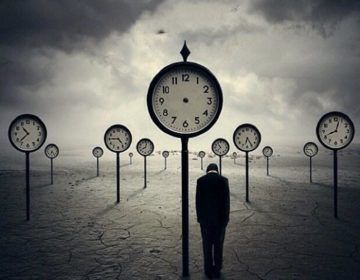 Since 1990 I have also visited Vietnam a few times. Vietnamese economic reform (called doi moi) started in the mid-1980’s. On my first visit I found Hanoi to be more like a small quiet town in India, with a lot of poverty (and some begging in the streets, but not many visibly malnourished children), while Saigon or Ho Chi Minh City was somewhat better-off, and more raucous and colorful. One lecture I gave in Vietnam was titled “ The Rocky Road to Reform” where I spelled out the challenges of economic transition from a state-dominated economy; after my lecture a Vietnamese academic came to me and said, “Our roads are all full of potholes, so we are used to the ‘rocky road’ of challenges”!
Since 1990 I have also visited Vietnam a few times. Vietnamese economic reform (called doi moi) started in the mid-1980’s. On my first visit I found Hanoi to be more like a small quiet town in India, with a lot of poverty (and some begging in the streets, but not many visibly malnourished children), while Saigon or Ho Chi Minh City was somewhat better-off, and more raucous and colorful. One lecture I gave in Vietnam was titled “ The Rocky Road to Reform” where I spelled out the challenges of economic transition from a state-dominated economy; after my lecture a Vietnamese academic came to me and said, “Our roads are all full of potholes, so we are used to the ‘rocky road’ of challenges”!
One of the most knowledgeable people in Vietnam on issues of economic reform I met in Hanoi was Le Dang Doanh, who was an adviser to the General Secretary of the Communist Party, and later President of the Central Institute of Economic Management, a premier government think-tank on economic policy (I actually sought him out at the suggestion of my journalist friend, Nayan Chanda, who used to be with the Far Eastern Economic Review).
On my subsequent visits I found out how fast Vietnam was changing. In Hanoi, where I saw mostly bicycles before, it is now practically impossible to cross the road with the unending streams of motor cycles and cars (they’ll not stop for you, you have to take your chance). The Vietnamese economy is now a veritable dynamo of activity in Asia. It started with agricultural exports (like rice and maritime products) but soon followed China, a historical adversary, in the well-worn path of export-oriented labor-intensive industrialization with foreign investment and learning of foreign technology, combined, of course, with a deplorable level of political repression. Read more »
by Michael Liss
Although Mother and Father were not much alike, both were revolted by vulgarity, boastfulness, conniving, and flattery. There was a family understanding that defeat was preferable to viciousness, that one’s achievements must be gained honorably.
—Isaac Bashevis Singer
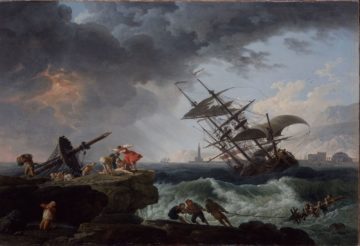
I think we would all agree that Singer’s parents had all the right values . . . . and would have made terrible politicians.
“Fortunately,” we voters are not burdened with too many of the moral, upright types (Gresham’s Law applies to politics as well as economics). We might be “troubled” by vulgarity, boastfulness, conniving, and flattery, but if it comes from our side, not excessively so. This allows us to focus on the more important things, like whether there is a disqualifying, empirically absolute limit to repulsiveness directed at the other side, or a disqualifying, empirically absolute limit to the repulsiveness of the behavior or ideas of one of our own.
In the 2022 Midterms, we are going to put those “character” questions to the test to a degree not seen in our lifetimes. While we are doing that, we will also be applying some very traditional metrics (like Presidential approval ratings), mixed with newly gerrymandered Congressional Districts where incumbency might not be as meaningful, a thicket of voter-suppression schemes (not all of which may act exactly as intended), and the distinct possibility of a considerable amount of outright cheating. Finally, we will be doing this in an environment of rising skepticism in the ability of our system to survive. The Right has its phalanx of Election Deniers eager for power at any price, the Left the growing sense that it will not be permitted to win (by Secretaries of State, by state legislatures and Governors, and by judges facilitating outcomes), even if it can convince a majority of the electorate.
Before we get to the Good, the Bad, and the Ugly, let’s check in on Joe Biden, the incumbent on trial. First, a little bit of history. When Presidential approval is low, the voters take it out on the President’s party in the Midterms. It’s remarkable how short Presidential honeymoons are. Part of the problem, especially for first-termers after a party change, is that they come into the job burdened with the mess for which their predecessors were voted out. Then they get new messes that inevitably come with the job. Finally, they create some of their own out of ambition and a sense of duty to their party. The “vision thing” is often the hubris thing. Read more »
“This is my life.” “This is my only life.”
…. —Stuart Murdoch, in the chorus of Unnecessary Drama
this is my only life
it comes down to this
I may have thought I had others
but life is not mosaic
in any sense that matters
there are no pieces
no re-dos
sequels
tomorrows
this is not a serial
not a cliff-hanger
with absurd rescues
this is singular
fullmoon-like in night sky
this is the one
Jim Culleny
5/19/22
by Usha Alexander
[This is the nineteenth (and last) in a series of essays, On Climate Truth and Fiction, in which I raise questions about environmental distress, the human experience, and storytelling. All the articles in this series can be read here.]
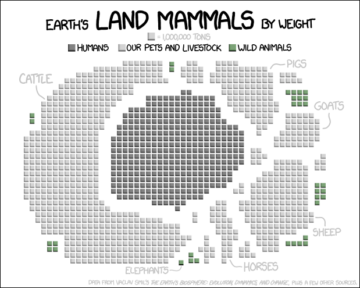 No, it’s not your imagination, this feeling that we are entering a time of escalating crises brought by Nature: more frequent and severe storms, floods, and forest fires; more debilitating heat-waves; mounting crop losses and failures; rising water stress, hunger, and related conflicts; unrelenting pest and disease threats for us, our “livestock,” and our crops. Our planet is moving beyond the stability of the Holocene—the narrow climatic range that enabled our modern civilization—to enter a much harsher climate regime, and its effects are starting to engulf us. Today, these effects are being felt much more by some than others, with weather related disasters primarily responsible for having forcibly displaced more than one percent of humanity from their homes by the middle of 2021—already an unprecedented human calamity. Ten times that number—eight-hundred and eighty million people—now lack sufficient food to eat, an increase of over a hundred-million hungry souls compared to two years ago.
No, it’s not your imagination, this feeling that we are entering a time of escalating crises brought by Nature: more frequent and severe storms, floods, and forest fires; more debilitating heat-waves; mounting crop losses and failures; rising water stress, hunger, and related conflicts; unrelenting pest and disease threats for us, our “livestock,” and our crops. Our planet is moving beyond the stability of the Holocene—the narrow climatic range that enabled our modern civilization—to enter a much harsher climate regime, and its effects are starting to engulf us. Today, these effects are being felt much more by some than others, with weather related disasters primarily responsible for having forcibly displaced more than one percent of humanity from their homes by the middle of 2021—already an unprecedented human calamity. Ten times that number—eight-hundred and eighty million people—now lack sufficient food to eat, an increase of over a hundred-million hungry souls compared to two years ago.
And if you worry that it might get worse, the answer is a hard yes: under the best-case scenarios, it will get much worse—and at a faster rate. This is according to the most comprehensive assessment of climate-change impacts compiled to date, part two of the IPCC’s Sixth Assessment Report by Working Group II, released in March 2022. The report projects, for instance, that in Africa alone half the population—seven-hundred million people—may be displaced due to water stress by 2030. Earlier forecasts cited by UN agencies that a billion people could be desperately displaced by 2050 do not seem improbable.
But I get it. This isn’t how we’re supposed to talk about the future. I too grew up imbibing and propagating the common technotopian fantasies of the late-20th Century zeitgeist, of a belief in humanity’s manifest destiny of multi-planetary spread and dominion. I imagined I might live to see people permanently inhabiting distant space stations or launching forays to colonize and terraform Mars. Though I’d always been aware that the non-human world around me was being annihilated, I squashed my intuitive fear about that growing danger with my learned techno-optimism about the future. Like most people of my time and place, I just didn’t put the pieces of the puzzle together. Not until very recently, that is. Not until I began truly digging in and trying to understand climate change. Read more »
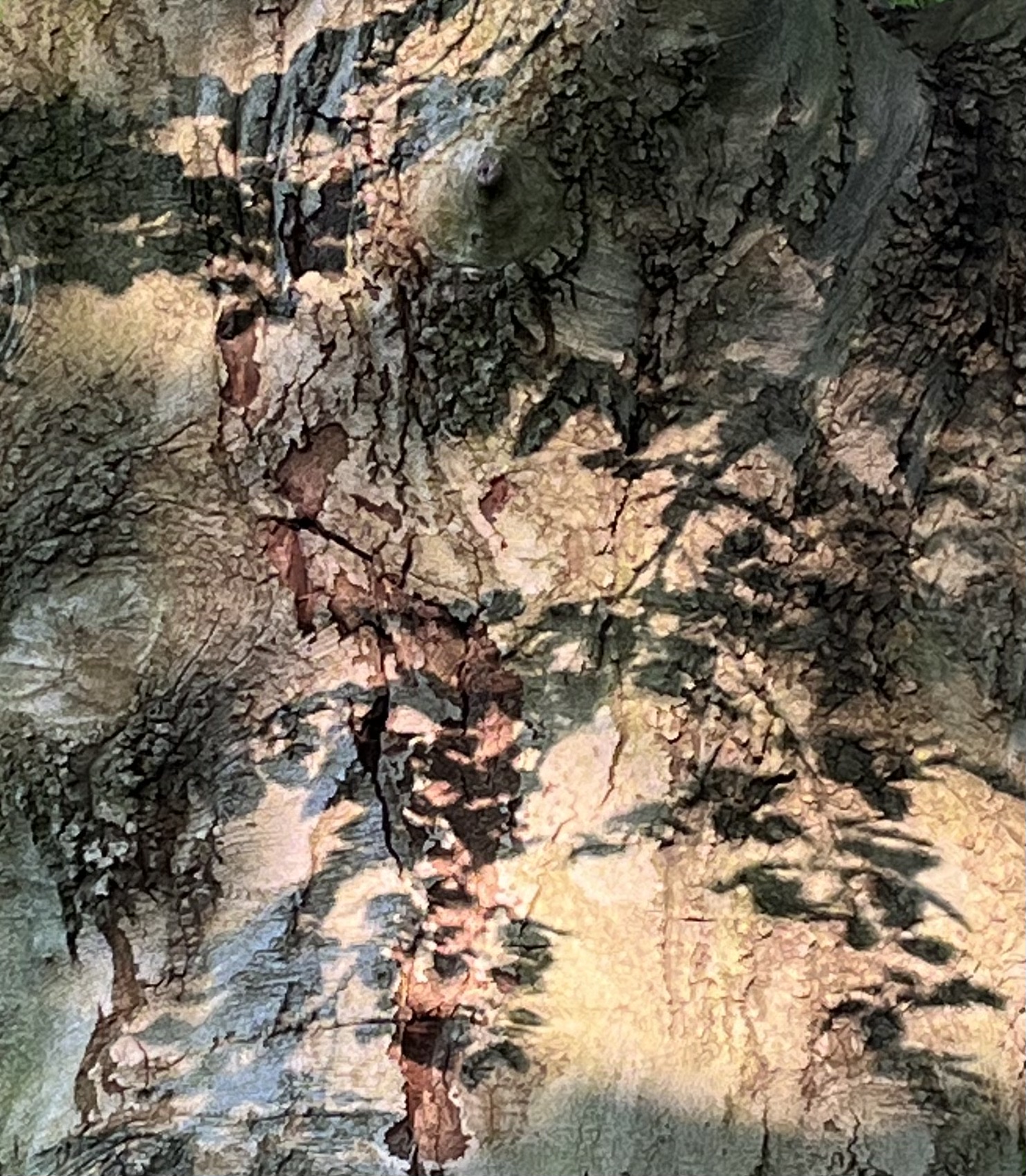 Sughra Raza. Shadows on Beech Trunk, May 21, 2022.
Sughra Raza. Shadows on Beech Trunk, May 21, 2022.
Digital photograph.
by Akim Reinhardt
 Not 7,500 miles this time. Nor a mad dash from one coast to another. Rather, a wiry triangle: the first leg from Baltimore to New Orleans; the second, up the Mississippi and Missouri Rivers to South Dakota; the hypotenuse, back to Maryland.
Not 7,500 miles this time. Nor a mad dash from one coast to another. Rather, a wiry triangle: the first leg from Baltimore to New Orleans; the second, up the Mississippi and Missouri Rivers to South Dakota; the hypotenuse, back to Maryland.
Abingdon, VA. I’m vaxed and boosted, but a bout of Covid has delayed the bon voyage. No time to stop in North Carolina for long overdue visits with family and friends. Instead, it’s straight down I-81, still a bit weary and taking it as far as I can. I support small businesses and try to avoid chains, which is not always easy out on the road, but I find a delightful independent motel called the Alpine Inn. It’s clean, it’s cheap, and it’s the best paid lodging I’ll have during my twenty-two night sojourn. I get dinner at a Mexican restaurant the cheerful motel owner recommends, assuring me they’ll do spicy if I ask for it. It’s close enough to walk. I sit outside. Every other customer is inside, and I have the patio to myself. I order a cerveza. I assume it will be a pint. It’s a quart. We’re off and running.
Nashville, TN. It should be only a five hour drive. But thirty miles outside of town, along a very rural stretch of I-40, I hit a flaccid snarl of traffic. It takes two hours to move six miles. I’m ninety minutes late, but still manage lunch with friends. Then it’s off to the airport where I pick up a compadre whose flown in from NYC; he’s a good sport, having agreed to hang out in the terminal and read a book for an hour so I can keep my belated lunch date. He hops in, we find a hummin’ community radio station, and are off. Next stop: Purgatory
Madison, AL. It’s only about seven hours to New Orleans, and we have two days to get there. My friend has scouted out minor league baseball possibilities. The Biloxi Shuckers, with their lurid Oyster mascot, are appealing, but we opt for the Rocket City Trash Pandas. Madison is just outside Huntsville, which has a NASA center, ergo the city’s nickname. And the minor leagues specialize in catchy marketing, thus the Raccoon mascot’s nickname. We roll into town the evening before the game, and I espy another independent lodging, the Madison Motel. What dark incomprehensiblities await us? Read more »
by Danielle Spencer
Name of Doctor: MD
Source and Reliability: MD is the primary source of information and appears to be self-reliable historian.
Summary: A 41-year old Caucasian man presents with decreased attention span and documented distraction. Patient reports that symptoms began “several years ago” and claims they were exacerbated by the introduction of the EMR. Lack of eye contact and frequent interruptions were documented. Denies loss of empathy. Denies malaise, burn-out, regret over not having pursued dermatological training or investment banking. Social history: physician in primary care practice.
A treatment plan was discussed at length with the MD.
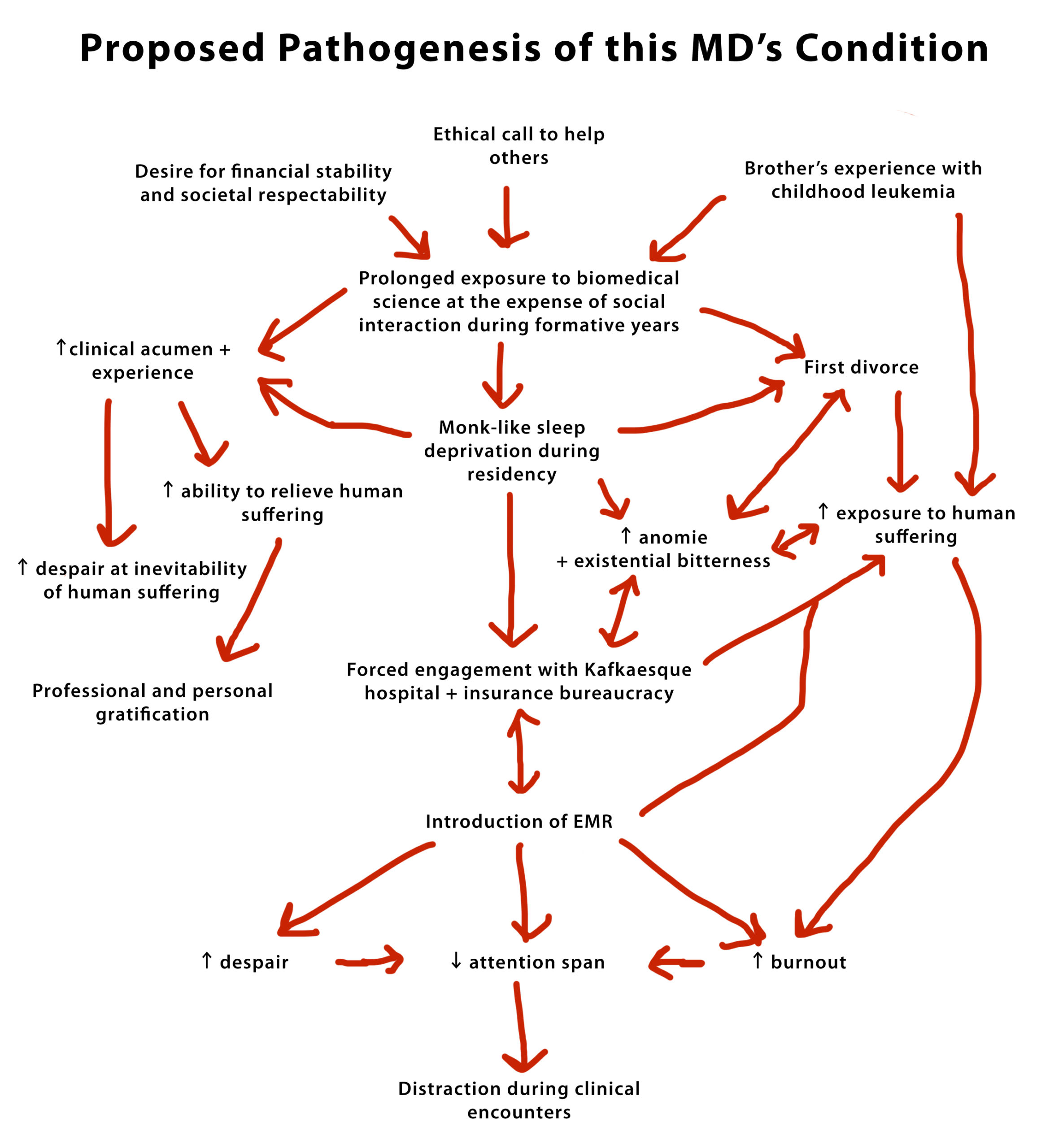
by Jeroen Bouterse
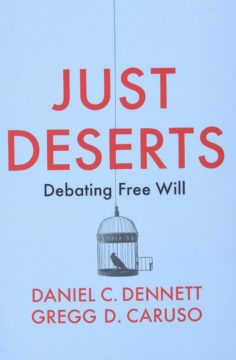 “The constant direct mode of address was a chore. No one will enjoy having this read to them.” Quoting from a referee report on the Nicomachean Ethics misses the point of James Warren’s hilarious rejection letter, but I looked it up because I remember thinking that the fictional critic was onto something, and not just about Aristotle. “I had the impression at times that some kind of conversational or dialectical background was being assumed but this is not at all marked in the text.” Indeed! Why hide the fun part?
“The constant direct mode of address was a chore. No one will enjoy having this read to them.” Quoting from a referee report on the Nicomachean Ethics misses the point of James Warren’s hilarious rejection letter, but I looked it up because I remember thinking that the fictional critic was onto something, and not just about Aristotle. “I had the impression at times that some kind of conversational or dialectical background was being assumed but this is not at all marked in the text.” Indeed! Why hide the fun part?
I owe several very happy moments to well-executed philosophical dialogues: Imre Lakatos’ Proofs and Refutations, Larry Laudan’s Science and Relativism, and Aristotle’s former supervisor come to mind. I will be ever so grateful to anybody who can point me to similarly exciting conversations. The dialogue form draws and holds the attention: it can let worldviews clash in the abstract, but it can simultaneously delve into matters of detail without becoming boring – these details having been established, after all, to flow not just from the idiosyncratic preoccupations of one contingent mind, but from larger intellectual interests common to at least two separate perspectives.
Still, they are usually written by one person. I was thrilled last year to find out about a philosophical dialogue where both positions were written by people actually holding them: in Just Deserts (2021), Gregg Caruso and Daniel Dennett debate the implications of their ideas about free will, especially via the question whether people ‘deserve’ blame, praise, punishment and reward (henceforth ‘BPPR’) for their actions. Caruso’s position is that there is an important sense in which they don’t, and that this ought to be reflected in the way in which we deal with bad or criminal behavior. Read more »
by Brooks Riley
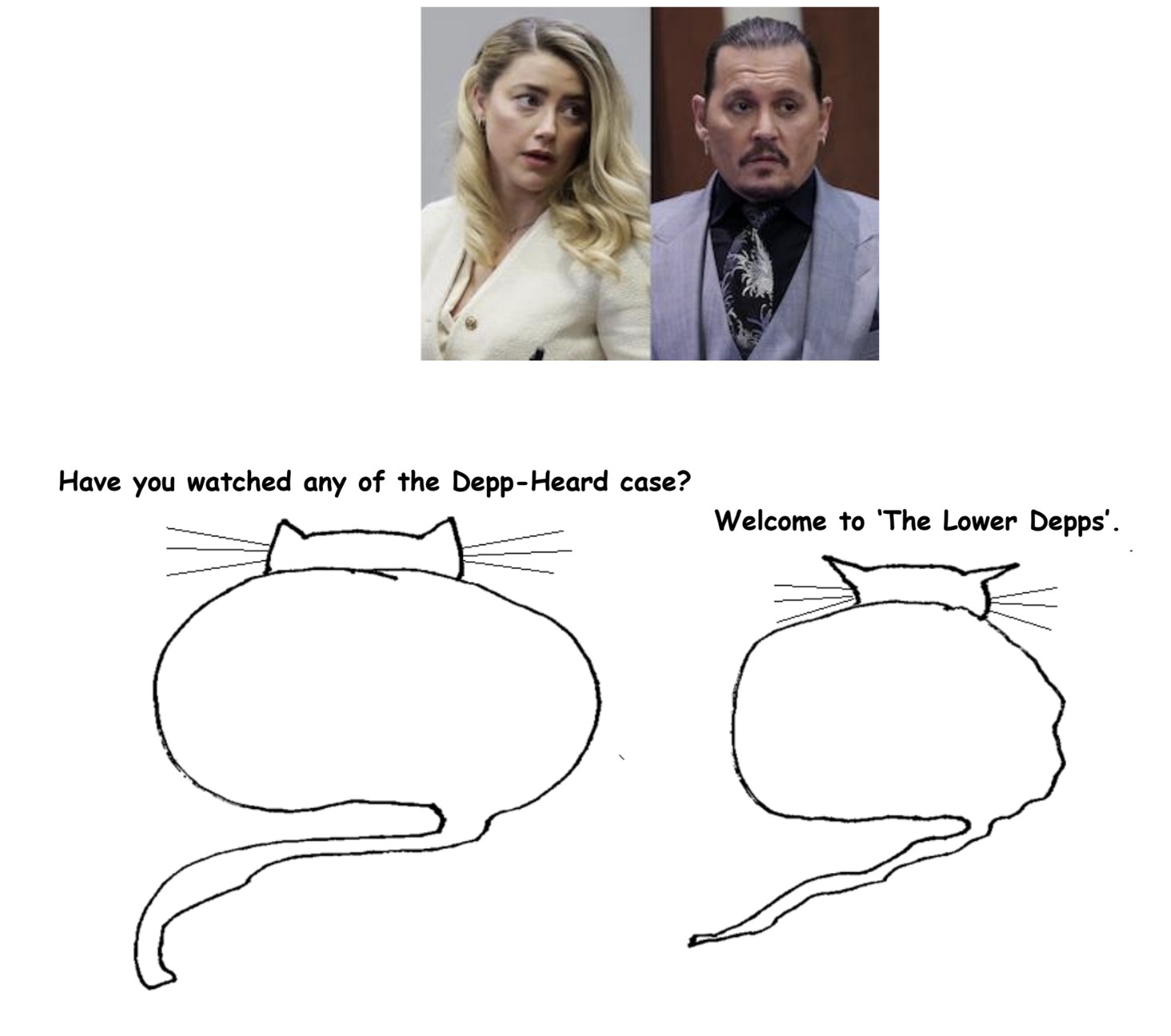
by Rafaël Newman

The month of May begins and ends with festivals of rebirth—at least here in Zurich, where May Day, the “Revolutionary First of May,” is a statutory holiday, while Ascension, the commemoration of Jesus’s foundational transubstantiation, having been retained as a feast day by the local Protestant reformers, is routinely observed on the last Thursday of the month. May thus boasts, at its head and tail, the celebrations of redemptive narratives canonized by the master transformational discourses of the West, the Marxist and the Christian, with a new worker’s world arising from the ashes of the old at one end, and the materially murdered Messiah resurrected as a transcendent, immortal, spiritual force at the other, Hegel spinning in his grave between them. And then of course, right in the middle of this median month in the vernal quarter of the year, the season of rejuvenation par excellence, there falls the culmination of yet another chronicle of presumed redemption and rebirth, its roots intertwined with both of those master discourses, the revolutionary and the religious: the anniversary of the founding of the state of Israel on May 14, 1948—but that’s another story.
In the German-speaking world, as in many other parts of Europe, the coming of May is also traditionally associated with a pre-Christian, pre-Communist fertility rite, observed with dances, maypoles, and bonfires, rituals shot through with the theme of rebirth, whether spiritual, as in the commemoration of the coming of Christianity to the pagan German lands on Walpurgisnacht, or physical, with more or less explicit invitations to procreation. Read more »
by Sarah Firisen
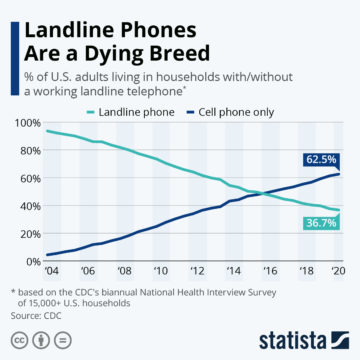
I began the process of cutting the cord when I moved back to NYC from upstate NY 10 years ago. I didn’t sign up for cable or home phone service. Instead, I had a mobile phone and Netflix, Amazon Prime Video, and Hulu. It felt liberating. Periodically, Verizon FIOS (through whom I had my home internet service) would contact me to offer me a “great deal” on a package that would usually include a home phone line and some sort of cable package, and I would happily tell them where to shove it. I never regretted this decision, and I know I’m far from the only person to do some version of this over the last decade.
My mobile phone service has been through my employer for the last few years, but I recently decided I wanted to take my number out of the corporate plan and pay for my mobile service. Our mobile phone numbers have become an increasing part of our identities. I remember the early days of mobile phone numbers when New Yorkers became anxious that the “prestigious” 917 area code numbers were running out. I have a 518 area code because I lived in upstate New York when I first got a mobile number. But that area code no longer has any connection to my physical location; I’m domiciled in Florida and spend most of my time in the Caribbean. But it is the number that all my online accounts are tied to, which connects me to every aspect of how I manage my life these days. I could change it, but it would be painful. Read more »

Notice that I said, “discovered,” not “created.” The Metaverse has always been there, you just have to know how to look for it. Mark Zuckerberg is just one in a long line of supplicants in search of the Metaverse. Whether or not he’ll find it, who knows? Neil Stephenson named it in his first novel, Snow Crash. He ran an interesting variation on it in The Diamond Age, where it appears as the Young Lady’s Illustrated Primer. But that primer is only imaginary. The one I created, with the help of my friends, was real.
Here’s the story.
Bérubé’s American Air Space
It all started back in 2006 at Bérubé’s joint. That’s Dr. Michael Bérubé, professor of English Literature at Penn State and proprietor of American Air Space, a most distinguished blog, now, alas, defunct. There was then, and there is now, no space like American Air Space. Once a day, five days a week – weekends off – Prof. Bérubé would post something. Sometime it was politics, lots of politics. That was back in the days when we had real politics, not this FAKE MAGA and post-MAGA politics. Sometimes it was about his son Jamie, who has Downs Syndrome and who loves the Beatles, golf, enumerating state capitols, and drawing, among other things. For a while Michael had a regular series, “Theory Tuesdays,” on which he would write succinct disquisitions on literary theory and criticism. Sometimes it was sports, hockey, always with the hockey. And then there were those Arbitrary, But Fun, contests on Fridays.
One day Michael got inspired. He decided to found the We Are All Giant Nuclear Fireball Now Party, aka WAAGNFNP. There’s a story about that, a true story, but this is not the time and place for that, but you can find part of the story here. Any worthwhile political party needs and party apparatus, so Oaktown Girl agreed to be Ministress of Truth, Justice, and the WAAGNFNP Way. As her first official act Oaktown Girl decided that the WAAGNFNP need to have a Show Trial to show that It Means Business. Read more »
by Pranab Bardhan
All of the articles in this series can be found here.

It is difficult to discuss politics openly and intensively with my Chinese friends, but I have some general idea of their political views and how to differentiate their politics. For example, Justin Lin, with a Chicago doctorate, seems to have slowly moved from conservative or mainstream economics to be in recent decades an advocate of interventionist industrial policy tinged with Chinese economic nationalism. Yingyi Qian is more of a liberal economist, and is wary of Chinese ultra-nationalism which is rampant now. Another bright liberal economist in the same vein is Chengaang Xu, whom I have known since his London School of Economics days and later in University of Hong Kong. Discussing with, and reading, Yingyi and Chengaang I have come to appreciate the unique combination that China has accomplished between political centralization and economic decentralization. Another economist with whom I have profitably discussed the Chinese economic and political system is Yang Yao, currently the Dean of the National School of Development at Peking University. On the basis of these discussions and further thinking on governance issues in China I gave a lecture at Renmin University in Beijing in 2018. Xiaobo Zhang, the editor of the international journal China Economic Review was in the audience; he persuaded me to write it up and he published the article there in 2020.
Some years back Yingyi had introduced me to the veteran economist Wu Jinglian, one of the major architects of market reforms in China; he presented me with his book Chinese Economic Reform and told me (this was around 2010) that he thought the Chinese case was turning into one of crony capitalism. His sharply expressed opinions have often landed him in trouble. During the Cultural Revolution he was persecuted (including being beaten up, his mother’s home ransacked and half of his wife’s head shaven by Red Guards). Again in recent years hardliners have tried to discredit him as a US spy in state-controlled public media for his pro-market stand. “I have two enemies,” he said in a 2009 interview with the New York Times, “The crony capitalists and the Maoists. They will use any means to attack me.” Read more »
by Ashutosh Jogalekar
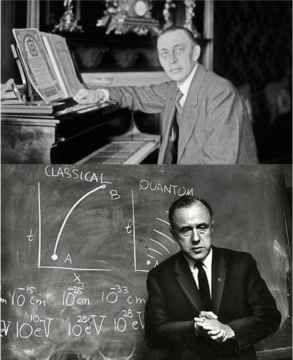
As someone who has been interested in both classical music and the history of physics for a long time, I have been intrigued by comparison of the styles between the two art forms. I use the term “art form” for physics styles deliberately since most of the best physics that has been done represents high art.
Just like with classical music, physics has been populated by architects and dreamers, careful workmen and inspired explorers, bursts of geniuses and sustained acts of creativity. It is worth spending some time discussing what the word “style” might even mean in a supposedly objective, quantitative field like physics where truth is divined through precise measurements and austere theories. The word style simply means a way of thinking, calculation and experiment, an idiosyncratic method that lends itself individually or collectively to figuring out the facts of nature. The fact is that there is no one style of doing physics, just like there is no one style of doing classical music. Physics has blossomed when it has benefited from an unpredictable diversity of styles; it has stagnated when a particular style hardened into the status quo. And just like classical music goes through periods of convention and experimentation, deaths and rebirths, so has physics.
If we take the three great eras of classical music – baroque, classical and romantic – and the leading composers pioneering these styles, it’s instructive to find parallels with the styles of some great physicists of yore. Johann Sebastian Bach who is my favorite classical musician was known for his precise, almost mathematical fugues, variations and concertos. Read more »